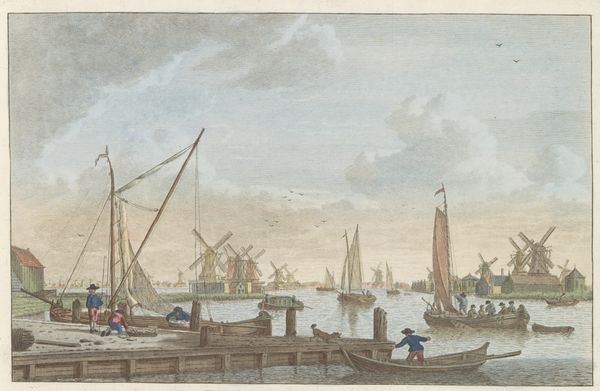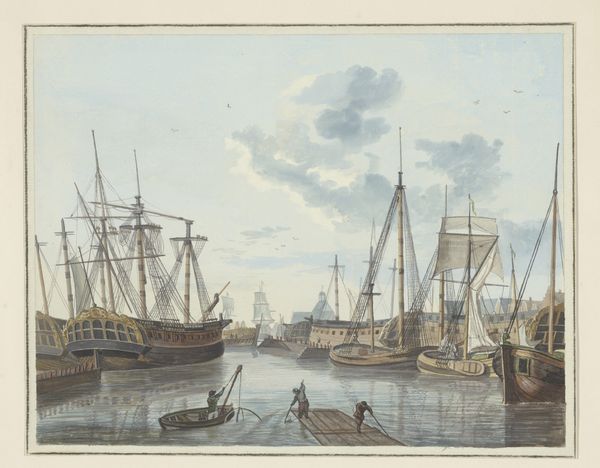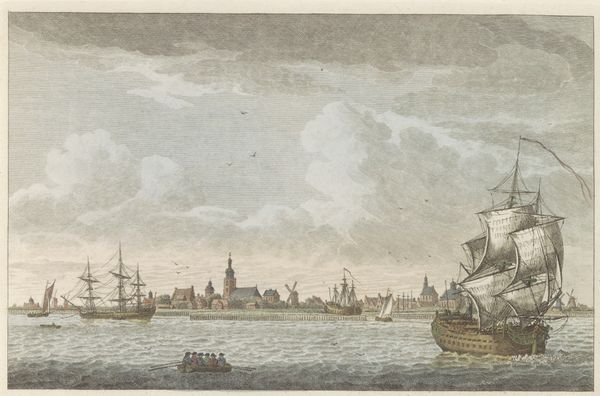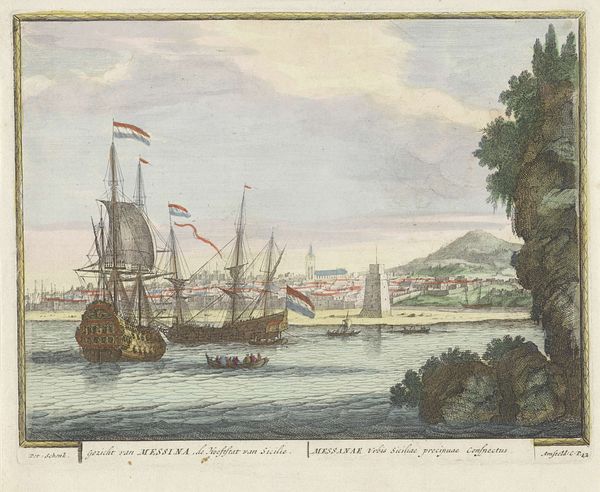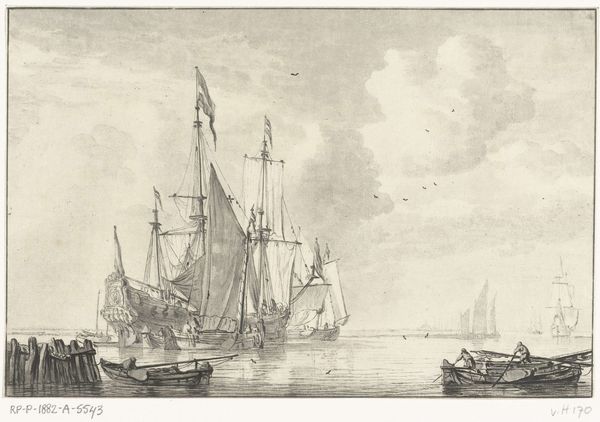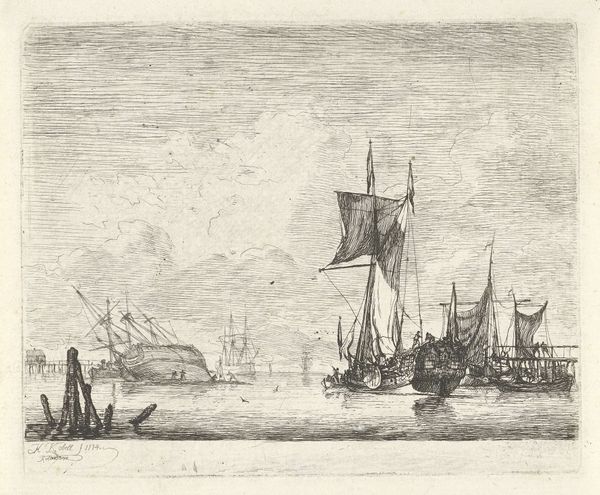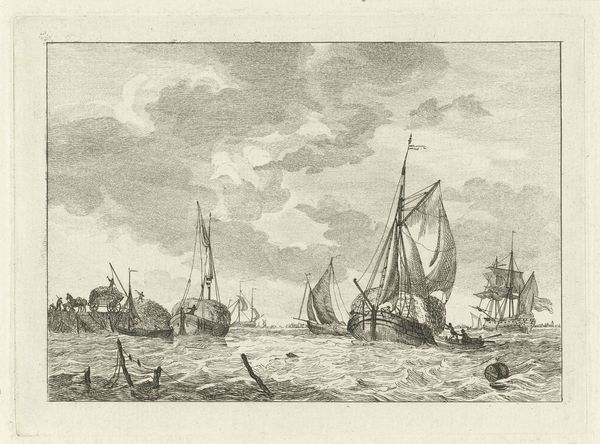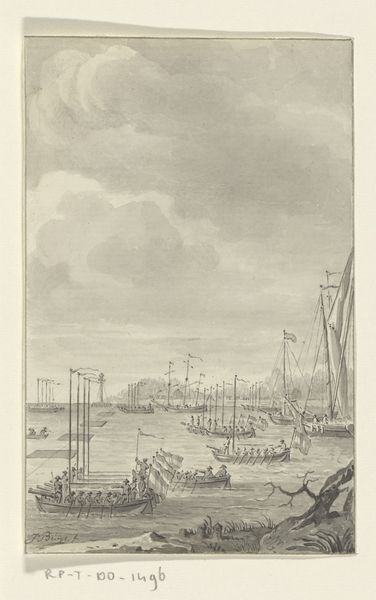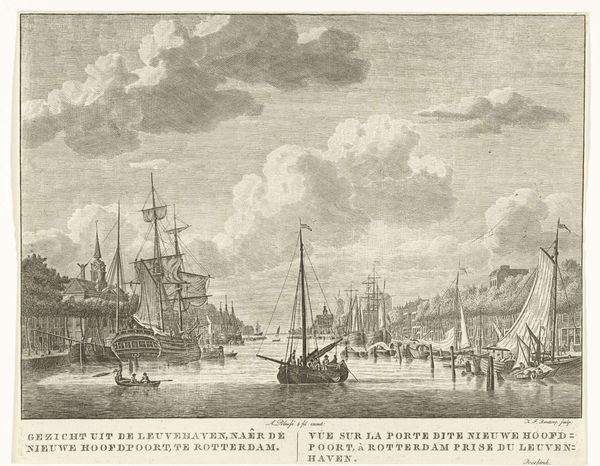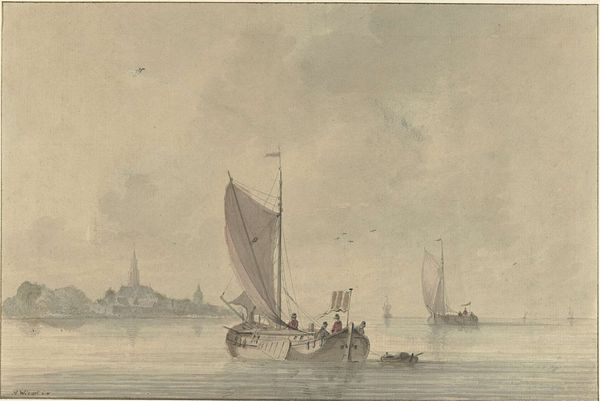
print, watercolor
#
water colours
#
dutch-golden-age
# print
#
landscape
#
watercolor
#
coloured pencil
#
cityscape
#
genre-painting
Dimensions: height 130 mm, width 581 mm
Copyright: Rijks Museum: Open Domain
Curator: We're looking at "Panorama van Amsterdam (blad A)" by Pieter van der Meulen, a watercolour print dating from between 1792 and 1847. Editor: My first impression is peaceful, yet somehow constrained. There's this pale sky washing over the scene and the details almost melt into each other. A hazy quietude over Amsterdam's harbor. Curator: I see your point about a sense of constraint. Look how the repetitive dock pilings push against the breezy freedom of the ships, even while the buildings on the far shore remain vague and somewhat undefined. As a materialist, this tension between the natural movement of water and imposed architecture calls attention to labor in trade, production, and transit. Editor: Precisely! And consider how many impressions were struck of this panoramic print, potentially moving beyond the boundaries of the elite and wealthy. Curator: Yes! It also captures the vibrancy of the genre paintings, especially by freezing a panoramic view with the presence of watercolours to mimic a painting feel rather than just the common reproducibility of a mere print. The soft palette adds a personal touch. It evokes nostalgia. Doesn't it whisper stories of merchants, sailors, and a bustling port life? Editor: Certainly the choice of watercolour lends it that softer feel. But even this aesthetic choice doesn’t disguise the material processes behind its creation: the labor involved in milling paper, the sourcing of pigments, the physical act of printing and hand-coloring each sheet. Curator: The watercolours truly soften the hard edges we see in so many cityscapes, though. I wonder what Amsterdam actually smelled like then? Maybe this print airbrushes out all those industrial odours. Editor: It is hard to say for sure. What this print allows us to envision and ponder is not only what meets the eye but what it does not! From production costs to potential commercial successes! The image offers, on top of aesthetic value, also cultural analysis. Curator: In a sense, a watercolor print gives an aesthetic dreamlike effect without losing the capacity to reflect the material conditions of the time. The ghost of the artist mixed with the ghostly echo of daily life… Editor: Yes, a very poetic distillation of labour and landscape. A fitting close, I think.
Comments
No comments
Be the first to comment and join the conversation on the ultimate creative platform.


